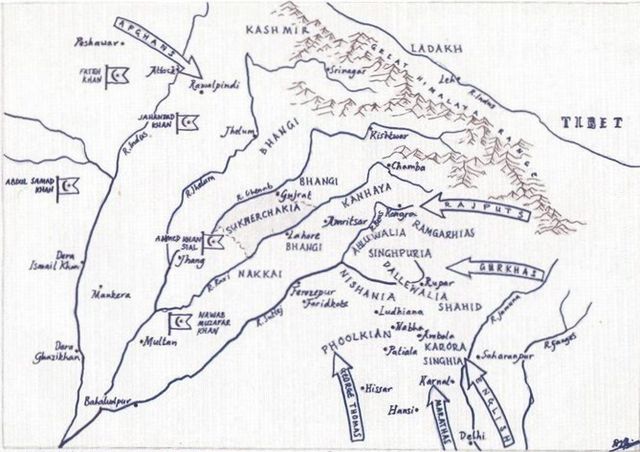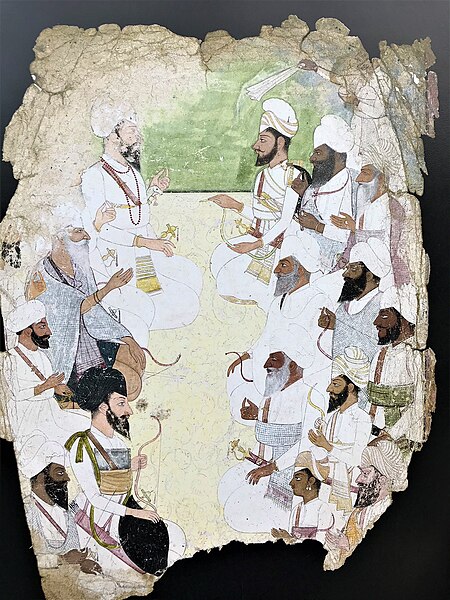The Sikh Confederacy was a confederation of twelve sovereign states which rose during the 18th century in the Punjab region in the northern part of the Indian subcontinent and is cited as one of the causes of the weakening of the Mughal Empire prior to Nader Shah's invasion of India (1738–1740).
Sikh Confederacy (1707–1799) Phulkian Misl · Ahluwalia Misl · Bhangi Misl · Kanheya Misl · Ramgarhia Misl · Singhpuria Misl · Panjgarhia Misl · Nishanwalia Misl · Sukerchakia Misl · Dallewalia Misl · Nakai Misl · Shaheedan Misl
Ramgarhia and Sukarchakia Misls hold a diplomatic meeting, 18th century painting
Painting of three seated Sikh sardars (from left-to-right): Nahar Singh, Karam Singh Sidhu of the Shaheedan Misl, and Lehna Singh Kahlon of the Bhangi Misl, circa late 18th century
Misl-era Sikhs with dancing and singing Nautch women
The Khalsa Fauj were the military forces of the Khalsa order of the Sikhs, established by the tenth guru, Guru Gobind Singh, in 1699. It replaced the Akal Sena that had been established by the sixth guru, Guru Hargobind.
Guru Gobind Singh with three of his sons (minus Fateh Singh) and retinue at the Anandpur Darbar in the year 1698
Painting of Guru Gobind Singh on horseback and holding bird of prey while marching with the Khalsa Fauj
Painting from an illustrated folio of a Mughal manuscript depicting the Battle of Sirhind (1710), also known as the Battle of Chappar Chiri. From the ‘Tawarikh-i Jahandar Shah’, Awadh or Lucknow, ca.1770. The Sikh Khalsa forces are dressed in blue whilst the Mughals are wearing white
Painting of Banda Singh Bahadur being blessed with five arrows by Guru Gobind Singh, by Gian Singh Naqqash, ca.1930








